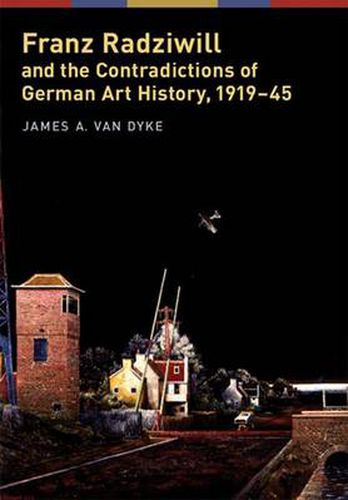Readings Newsletter
Become a Readings Member to make your shopping experience even easier.
Sign in or sign up for free!
You’re not far away from qualifying for FREE standard shipping within Australia
You’ve qualified for FREE standard shipping within Australia
The cart is loading…






What was Nazi art? For the most part, we think of traditionally painted scenes of peasants plowing; blonde German girls with or without clothes; and heroically posed, square-jawed soldiers. When we think of modern art in Nazi Germany, we typically think above all of the infamous exhibition
Degenerate Art,
which opened in Munich in July 1937. While these associations are not entirely wrong, the relationship between modern German art and National Socialism is considerably more complex than has generally been understood.
In Franz Radziwill and the Contradictions of German Art History, 1919-45, James A. van Dyke tells the story of a well-known modern artist who regarded modernity and civilization with deep ambivalence during the 1920s and then for a time became a strong supporter of National Socialism. Radziwill’s art, politics, and career are embedded in the debates about the definition of German art and state art policy in and after Hitler’s rise. Challenging the monolithic view of
the Nazis,
this book details how a painter could be championed by certain powerful National Socialists and be seen as a
degenerate
artist by others, how he could criticize the state and yet fight for the Fatherland, and how the unevenness of Hitler’s state could foster hope and resistance even in a man who ultimately was deeply distressed by events.
$9.00 standard shipping within Australia
FREE standard shipping within Australia for orders over $100.00
Express & International shipping calculated at checkout
What was Nazi art? For the most part, we think of traditionally painted scenes of peasants plowing; blonde German girls with or without clothes; and heroically posed, square-jawed soldiers. When we think of modern art in Nazi Germany, we typically think above all of the infamous exhibition
Degenerate Art,
which opened in Munich in July 1937. While these associations are not entirely wrong, the relationship between modern German art and National Socialism is considerably more complex than has generally been understood.
In Franz Radziwill and the Contradictions of German Art History, 1919-45, James A. van Dyke tells the story of a well-known modern artist who regarded modernity and civilization with deep ambivalence during the 1920s and then for a time became a strong supporter of National Socialism. Radziwill’s art, politics, and career are embedded in the debates about the definition of German art and state art policy in and after Hitler’s rise. Challenging the monolithic view of
the Nazis,
this book details how a painter could be championed by certain powerful National Socialists and be seen as a
degenerate
artist by others, how he could criticize the state and yet fight for the Fatherland, and how the unevenness of Hitler’s state could foster hope and resistance even in a man who ultimately was deeply distressed by events.